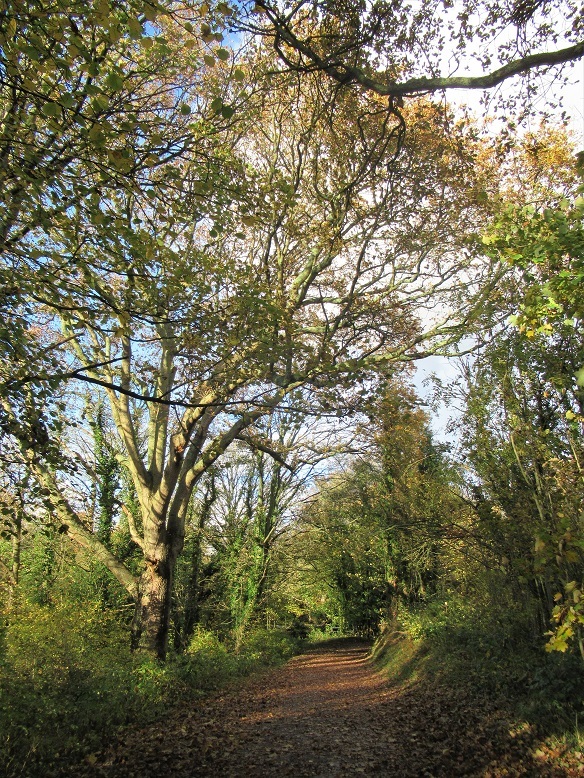The Cuckoo Trail
Nov. 12th, 2020 09:19 amThe Cuckoo Trail runs as you'd expect a railway line to run and not like a path that has been made by walkers and riders. If it bends it bends gracefully and whenever it can it runs straight and on the level. It doesn't wiggle, because big metal things that run on tracks can't do that and it doesn't go up and down hills unless it absolutely has to, because going up and down hills increases your fuel bill. It was achieved with gangs of navvies and explosives- and disregards topography. It crosses low-lying fields on an enbankment, deals with rising ground by cutting through it and rivers and sunken roads by bridging them.
It is lined with trees and bushes- and beyond them lie fields and houses. If the trees weren't there you might be able to see the South Downs because they're close. It runs through the Weald like a ribbon of woodland.
Weald, by the way, is the Anglo-Saxon version of the German word "wald" meaning forest. Before the railways opened it up forest is what this part of the world mainly was- and forest meant charcoal and charcoal meant industry- predominantly iron-working. The Sussex iron-masters were great men in their time- and built themselves big houses and provided the nation with cannon and firebacks and- to quote Kipling (because round here everything swings round to him eventually)- "the stout railings/ That stand about St Pauls." Kipling's own house in Burwash- now a National Trust property- was built by a 17th century ironmaster.
This picture shows a section of the Trail to the south of Hellingly. I took it on one of the rare occasions when there were no other passengers in view.

It is lined with trees and bushes- and beyond them lie fields and houses. If the trees weren't there you might be able to see the South Downs because they're close. It runs through the Weald like a ribbon of woodland.
Weald, by the way, is the Anglo-Saxon version of the German word "wald" meaning forest. Before the railways opened it up forest is what this part of the world mainly was- and forest meant charcoal and charcoal meant industry- predominantly iron-working. The Sussex iron-masters were great men in their time- and built themselves big houses and provided the nation with cannon and firebacks and- to quote Kipling (because round here everything swings round to him eventually)- "the stout railings/ That stand about St Pauls." Kipling's own house in Burwash- now a National Trust property- was built by a 17th century ironmaster.
This picture shows a section of the Trail to the south of Hellingly. I took it on one of the rare occasions when there were no other passengers in view.
